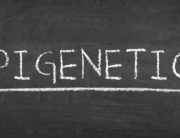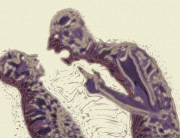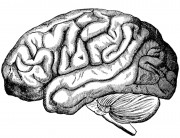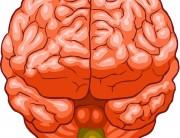Post-Traumatic Stress Disorder
Post Traumatic Stress Disorder (PTSD) is diagnosed when an individual displays a cluster of symptoms that include various manifestations of the following: dissociation (feeling removed from reality), re-experiencing (flashbacks), and increased arousal (heightened stress response). In order for a diagnosis of PTSD to occur, however, these symptoms need to be as a result of the individual having been directly exposed to an event that threatened their life and/or safety or that of another individual. This criterion is known as the A1 criterion, since it is the primary criterion that must be present in order for diagnosis to occur.
Amongst the general population, 7-8% of people will end up with PTSD at some point in their life. Within certain groups of people, however, such as individuals with substance-use disorders, the rate of diagnosis is much higher. For example, in one sample of substance-abusing psychiatric patients, researchers found that 90% had experienced physical/sexual assault and at least 50% met the diagnostic criteria for crime-related PTSD.
However, there is a new direction of understanding with regard to trauma-related stress reactions; it is referred to as complex PTSD (CPTSD). Individuals in this category meet all of the same diagnostic criteria as those individuals diagnosed with classic PTSD, with the exception of the A1 criterion. As one researcher stated, “The chronic nature of family violence…complicates the diagnosis of PTSD. With violence in the home, there may not be an identifiable pretrauma state of the child’s functioning, there may not be one specific traumatic event that stands out, and violent episodes may not represent life-threatening circumstances”.
The diagnostic criteria for PTSD were originally derived by observing individuals returning home from armed combat who displayed a particular cluster of symptoms with seemingly common causes. However, these criteria did not always adequately describe individuals victimized by chronic childhood physical and sexual abuse. A population that was even more poorly represented by the classic criteria was individuals who had a history of neglect, which has been demonstrated to be potentially more developmentally harmful than other overt forms of abuse.
It’s a Bit More Complex Than That…
Researchers discovered that although symptoms in people with chronic trauma histories was consistent with many classic PTSD responses, there were some differences as well. The specific symptomatic areas that have been identified are a) affect regulation (controlling one’s emotions), b) information processing (e.g. attentional ability), c) self-concept (identity stability), d) behavioral control (impulsiveness or reactivity), e) interpersonal relationships (instability), and f) biological processes. The last category refers to physical complaints that do not have supporting medical evidence.
One of the distinguishing features of CPTSD is that it occurs almost exclusively as a result of interpersonal trauma. In other words, classic traumatic experiences such as motor vehicle accidents and natural disasters do not typically result in the same post-traumatic difficulties as negative or harmful experiences based on interpersonal stress. This has given rise to a natural question: why does interpersonal trauma have a significantly different response set than classic forms of trauma? One of the major theories put forth to explain this dynamic is the notion of attachment injuries. In order to understand this concept, a brief examination of attachment theory is called for.
Attachment: The Roots of Regulation
The attachment process begins before birth as the child’s body in utero achieves a rhythm and familiarity with the mother’s body. This process continues following birth. In neurobiological terms, the infant receives a flood of neurotransmitters called endorphins during moments of attunement with the caregiver. Attunement refers to moments when the mother and child are emotionally and physically in tune with each other. It is this release of endorphins that creates the bond between child and caregiver. However, when the child is deprived of attunement with the caregiver, an endorphin deficit develops, which leads to a state of anxiety in the child. This state of stress arousal results in confused behavior as the child attempts to gain a sense of safety.
Research has provided insights into this attachment process with regard to the origin of attachment disorders with adopted children. According to numerous studies, the lack of a predictable, secure base may result in extreme anxiety and cause the child to lapse into survival mode. Particularly in the case of adopted children, when caregivers attempt to show love and concern for the child, this caring behavior produces confusion which leads to distress and aggression on the part of the child.
Attachment behaviors such as those described above are known as disorganized attachment. The hallmark of disorganized attachment is confused and contradictory behavior on the part of the child. This behavior, in turn, results in frustrated, impatient, and stressful caregiving that perpetuates the attachment difficulty, confirming the child’s experience of not having a stable and secure attachment base. This particular type of attachment is very resilient, meaning that it is capable of enduring throughout life circumstances, despite evidence in the individual’s life that secure bases are available. Researchers have attempted to explain why this might be the case, describing this type of attachment as a survival response. Some scientists argue that it is in the best interests of the organism to act in aggressive ways (even defensive aggression) since aggression tends to ward off threats to survival. If this is accepted as true, it is understandable that any behavior that has its origins in our very survival would be resistant to change.
Given this theoretical framework, it is not difficult to understand why interpersonal trauma leads to stress reactions that are much more interpersonal in nature than classic trauma exposure. Many examples of developmental trauma have been documented. Among these are parental neglect, adoption, physical and sexual abuse, and organized violence.
Tragic Examples
In 2003, Swedish researchers provided case studies of three Kosovar refugee children who exhibited aggressive, confused behavior, particularly toward their families, after being exposed to war-related violence in the presence of their mothers. In each case, the researchers discovered that the mothers themselves had been the victims of interpersonal violence in the form of rape at the hands of soldiers. The trauma of these events led the mothers to withdraw from their families. According to the researchers, this was partly because they no longer saw themselves as suitable mothers given their inability to adequately protect their children from exposure to trauma. It was also partly because in many cases, the children acted as constant reminders of the trauma that had occurred, since they had been present during the events. As such, they were treated with avoidance, just as any other environmental trigger would be. The children reacted to their mother’s withdrawal in many ways, including acts of aggression toward their mothers and other children, withdrawing, and regressing developmentally.
If we interpret this description of the attachment disruption while viewing disorganized attachment as survival behavior, we can suppose that as the children needed a secure base more than ever, that secure base was being withdrawn from them, resulting in states of extreme anxiety on the part of the children. This anxiety, routed through the amygdala to the fight-or-flight respone, results in survival-based behaviors such as aggression and/or withdrawal.
Dr. Gabor Mate describes the evolutionary benefit of such behaviors as drawing the attention of caregivers, thus theoretically increasing the chances that the child will be protected. From the earliest possible age, according to Mate, the infant’s physical safety is tied to its emotional state. It is not surprising then to discover that the brain does not differentiate between physical and emotional danger and/or pain, since these concepts have been paired since birth.
In the next installment on this topic, we will discuss the parallel between the attachment system and another of the body’s senses that we take for granted, as well as exploring how to help in the healing of CPTSD.


















































[…] Previous […]